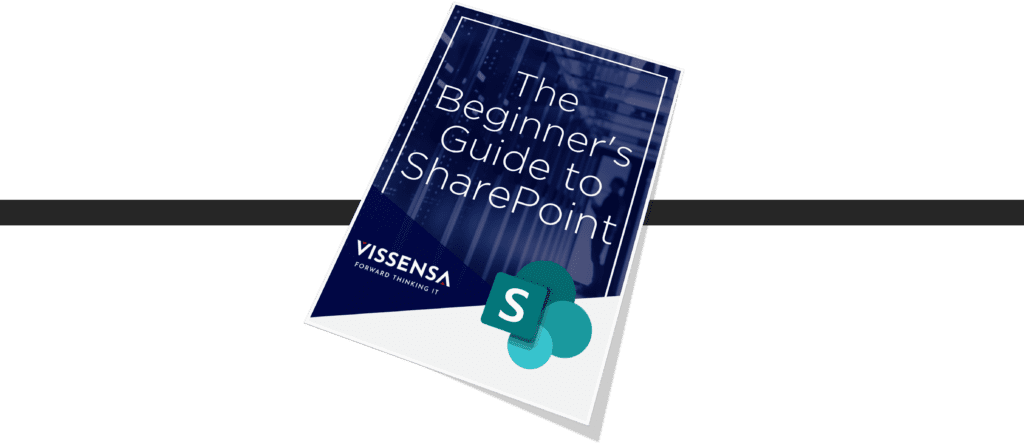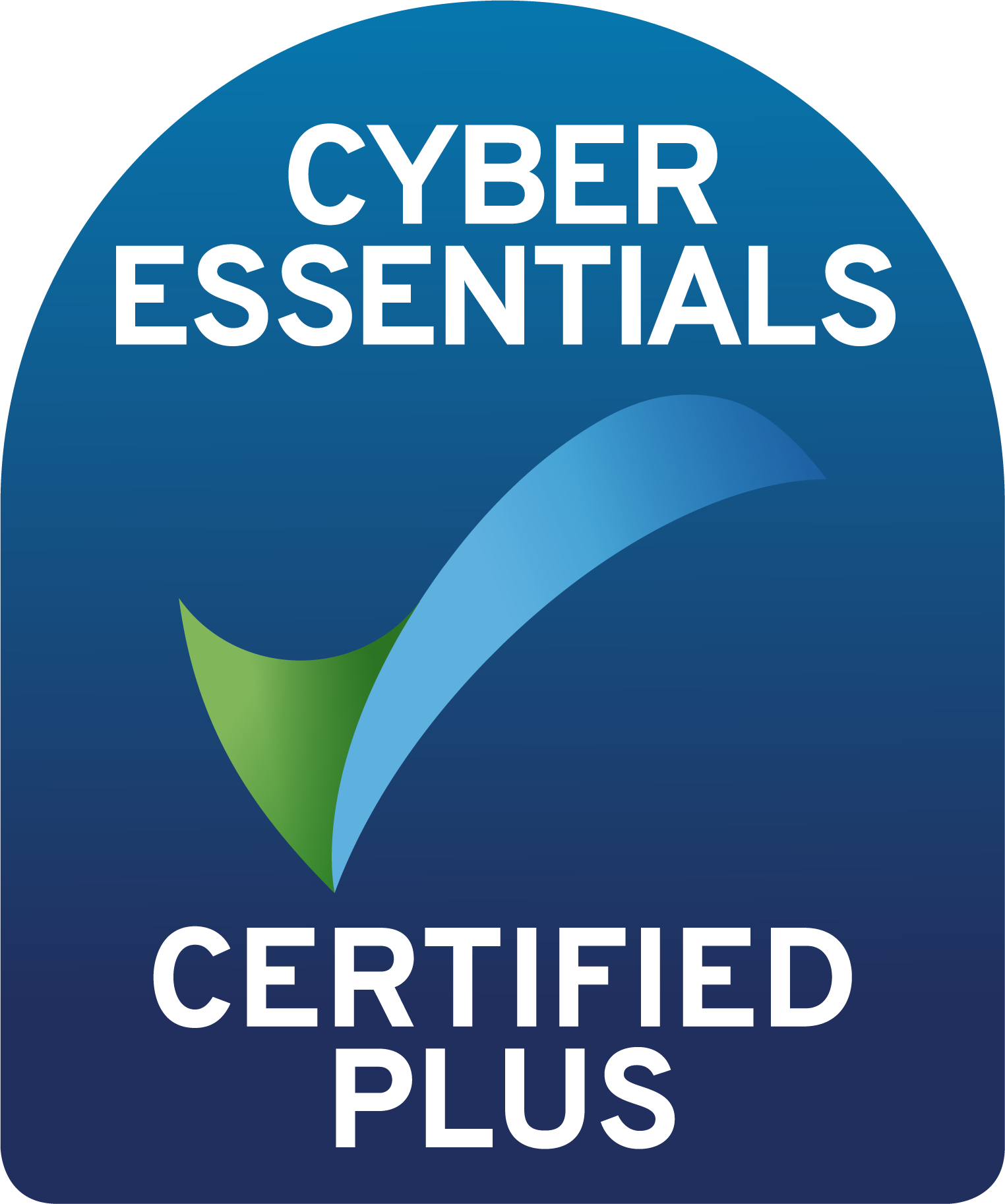
Welcome to the first chapter in our Beginner’s Guide to SharePoint.
What is Microsoft SharePoint?
SharePoint is a cloud-based content management system and intranet platform designed for storing, organising, and sharing information and files of all formats with permitted users, internal or external. It forms part of the Microsoft Office 365 business suite, a set of tightly integrated business tools.
Storing and sharing data in one place, rather than having to use a combination of clunky internal folders and file sharing tools, greatly improves the accessibility and searchability of your files. Setting up SharePoint for your organisation gives you a single, central location for storing and sharing all your critical business information, documents, and files. SharePoint consists of sites, similar to the intranet sites most companies have, and folders, similar to what most companies have been using to share files internally. The difference is these resources are all held within a single platform, removing the need for separate intranet sites and folder systems. Organising all this data in SharePoint makes how you store, share, access and secure information that is important to your business much more structured, allowing for better staff collaboration.
We’ve all experienced issues in the past where files can’t be located because of complicated folder structures that have built up over time, or faced difficulties finding the most recent version of a document because it’s been saved and worked on in several different locations. Well, SharePoint is the answer! It’s designed to support collaborative working and with its combination of intranet style pages and document libraries, it’s incredibly easy to navigate. Even your newest employees should be able to easily find all the files they need on SharePoint. As part of the Microsoft 365 suite of products, SharePoint integrates with Microsoft Outlook, allowing users to alert and advise colleagues when file versions have changed, or new documents are available to view.
What’s the difference between SharePoint and a shared drive?
SharePoint and shared drives have different functionality. SharePoint consists of a central cloud-based hub that stores information for all users in a structured layout that is easy to navigate, whereas shared drives are silos of information to which access can be given.
Shared drives consist of a combination of folders and files that can be accessed by other people in your company or department depending on permissions. In SharePoint, centralised files and documents can be versioned, shared, searched, and secured at the file or object level, making it a much better choice for supporting collaborative working. If you’ve worked in an office at any point in the last couple of decades, you’re probably already well aware of how shared drives work. You’ll also be aware of how frustrating they can be when you’re trying to find files, collaborate on documents without multiple versions being created, or working with a department that uses their own shared drive that you don’t have access to. SharePoint is the evolution of shared drives and has been designed specifically to eliminate problems like this. In SharePoint, you can share access to files and objects without having to give someone access to an entire folder, making it much easier to collaborate with other teams in your business. What’s more, SharePoint records versions of shared documents and will warn users if a colleague has taken a copy of the document to edit, eliminating any problems that can arise when multiple versions of a document are being worked on.
How do I maximise collaboration in SharePoint?
SharePoint has heaps of functionality that will help you collaborate with your colleagues effectively. A good starting place is to create your shared sites and document libraries so that all your colleagues can easily access the files they need. From here, you can start utilising SharePoint’s more advanced collaboration tools.
A few collaboration tools you might find useful are:
• Simultaneous Editing: allows multiple people to work on the same document at the same time
• Versioning: creates a historical record of a document, which you can use to view version history, restore a previous version, delete a version, un-publish a version or recover a deleted version
• Document Management: SharePoint allows you to control what kind of documents and content can be created in your company, the templates which can be used for different documents, and how documents are distributed. You can even require people to check out documents before editing them in cases when stringent document control is necessary.
What devices are compatible with SharePoint?
SharePoint is compatible with most Windows devices, Android devices, IOS devices (iPhones and iPads) and macOS devices (iMac and MacBooks). Alongside offering apps for most of these devices, SharePoint is also accessible through most up to date browsers including Internet Explorer, Microsoft Edge, Chrome and Safari.
How much does SharePoint cost and what does it include?
SharePoint can cost anything between £3.80 per user/month on SharePoint Plan 1 and £17.60 per user/month on the Office 365 E3 plan. Most corporate organisations select an Office 365 E3 licence giving a feature rich product that incorporates standard Office apps that most users are familiar with.
Using SharePoint as your intranet
SharePoint is the perfect replacement for the traditional intranet. Intranets are internal websites used to store and share company information with employees. Keeping these internal sites up to date can be time consuming and requires people with web design skills.
SharePoint revolutionises this by simplifying the storage and sharing of files and resources through stylish sites that can be easily built from templates, eliminating the need for web designers.
SharePoint vs OneDrive
It’s less SharePoint vs OneDrive and more SharePoint with OneDrive. Both products are part of the Microsoft 365 suite and should be used in tandem rather than independently. SharePoint is intended as a shared space for you and your team. OneDrive is your personal folder and can’t be accessed by anyone unless you give them permission.
The major difference between SharePoint and OneDrive is how each product shares files and information between the author and other users. OneDrive assumes information is private to the author unless explicitly shared with an external user. It is very limited in the sharing options it provides, only allowing access to be granted at folder level. SharePoint assumes collaboration with multiple users will take place and gives the author a wide range of sharing options at site, folder or file level.











